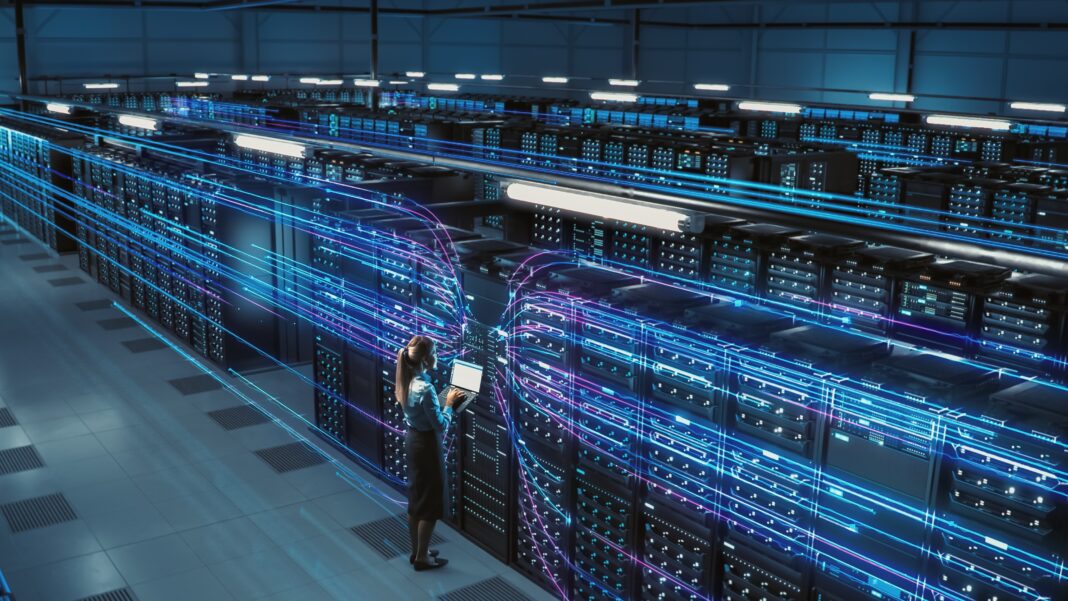How to Reduce the Environmental Impact of Data Centers
Social media, online gaming, e-commerce and digital nomadism change how people live and work. They also change the way tech companies use energy. Meeting online demands requires vast data centers, and these buildings’ carbon footprints increase yearly. It’s essential to tackle this issue before it balloons out of control. Implementing eco-friendly practices can usher in a new generation of eco-conscious tech users.
The Impact of Data Centers
How bad could the carbon footprint of data centers be, especially considering other highly polluting sectors like manufacturing and transportation? Data centers are responsible for about 1.5% of global electricity use. It isn’t the number that’s alarming — it’s the speed at which it’s growing.
Data and transmission infrastructure expansion has doubled since 2010. This was necessary to meet traffic, which has increased twentyfold. Data centers now use more energy than some countries, with few policies outlining best management practices with the climate in mind.
7 Eco-Friendly Strategies for Data Centers
While regulatory bodies determine what will serve the planet best in the long term, data center managers must implement environmentally focused strategies to lower footprints. Here are some examples of these tactics:
1. Energy-Efficient Hardware
Everything from a data center’s processors, solid-state drives and storage units should be energy-efficient. Agencies exist to assign ratings for applicable devices, allowing companies to make swift decisions on the most climate-aware tech. Massive names like Intel, AMD and NVIDIA all have options, promising to make green hardware accessible to the masses.
The equipment uses less electricity, extending the life span of uninterrupted power supplies. Data centers should find ways to put less pressure on machinery to reduce waste in the long haul. Many machines even have the EPA-recommended eco-modes, conserving energy without manual intervention.
Additionally, energy-efficient hardware may reduce a data center’s supply chain emissions if the manufacturer chooses more sustainably sourced materials.
2. Renewable Energy Sources
Data centers have numerous renewable energy options based on their location. Desert infrastructure may want to install solar panels, while others could have access to robust hydropower. Polluting peripherals, like diesel generators, may also become greener this way.
Prioritizing installation and grid connectivity eliminates fossil fuel reliance, enhances energy independence and builds defenses against outages with external battery storage. Google has been a successful role model in the industry, detailing its journey to decarbonize with solar.
3. Efficient Cooling Systems
Having extensive hardware in one location emits substantial radiant heat. Advanced cooling systems are essential for preventing outages. Numerous solutions exist to cool down data centers, automate temperature management and distribute airflow, such as:
> Liquid immersion cooling
> Internet of Things (IoT) temperature sensors
> Evaporative cooling
> Geothermal cooling
> Free cooling
> Direct-to-chip cooling
Infrastructure upgrades may be wise, too. For example, upgrading an HVAC system, incorporating a green roof or considering modular design can lower temperatures alongside tech solutions. The area may cool down enough to remove energy-intensive equipment, like chillers. This also lowers water consumption.
4. Data Center Consolidation and Colocation
Not all organizations need proprietary centers. Colocation is like shared housing but for data infrastructure, reducing the number of new builds breaking ground. Land use is a massive environmental concern, as renewable energy expansion, grid modernization and urbanization require space. Sharing resources means multiple companies may benefit from eco-friendly design choices, like renewable energy, and using an existing structure.
If a business has too much hardware to incorporate into a shared data center, consider consolidating assets. You can achieve this with modular design or by upgrading legacy systems to sleeker, more space-conscious machines.
5. Virtualization and Cloud Computing
The cloud is vast and requires considerable energy, but this amount is still less than alternatives. A 2018 study from Microsoft shows that storing and processing data via the cloud makes a data center up to 98% more carbon-efficient than a conventional setup. Developers often integrate these resources with green software, simplifying virtual processes to use fewer assets to boot, operate and store information.
Virtualization, or diversifying computerized efforts to several virtual machines, gets greater value per watt of power. A virtual environment could run multiple operating systems from one space instead of numerous instances of intense processing. Servers use full power even when working between 5% and 15% efficiency, so employing virtual options eliminates bulky hardware and saves resources.
6. Waste Reduction and Recycling
E-waste is a plague to the planet, as humans toss the equivalent of 800 laptops per second. Data centers contribute to the problem. They could slash waste in the following ways, minimizing the height and toxic contents of landfills:
> Executing more rigorous preventive maintenance
> Eliminating paper processes and packaging
> Composting
> Advocating for more robust recycling infrastructure
> Exploring modular construction
> Working with companies that dismiss planned obsolescence
These strategies help the environment by keeping metals and other chemical pollutants out of waterways and soil. Mounds of e-waste negatively affect communities worldwide, ruining agriculture, public health and water quality. Recycling and upcycling hardware instead of dumping it will promote a circular economy and save livelihoods.
7. Monitoring and Optimization
Continuous environmental dedication only happens by reviewing progress to influence goals. Reducing carbon footprints is a constant project, and outlining auditing protocols and thoroughly documenting sustainable metrics, like energy and water consumption, inform overseers how to amplify future efforts. Without this information, data centers are unable to optimize beyond a simple solar array installation or water leak sensor.
Eventually, this data may inform predictive analytics for tools like AI and machine learning, delivering suggestions to data centers to expedite improvements.
Making Data Centers Cooler
These massive buildings use significant electricity and water. They can produce tons of waste if companies aren’t careful. Their carbon footprints are already too large, so cutting back now is the best long-term solution. Sustainable data center practices require vigilant management to balance emerging tech with climate friendliness.
